Male hair loss
Hair loss in men is common, with one in three men experiencing incipient baldness between the ages of 20 and 50. Common problems include a receding hairline, inlets, little hair and a bald crown.

CAUSES OF HAIR LOSS IN MEN
Hair loss in men can result from multiple factors, but is usually caused by a combination of genetics, ageing and hormonal changes. The most common causes of hair loss in men are hereditary baldness, hair loss due to stress and patchy baldness.
Is it hereditary baldness or not?
Hereditary baldness (androgenetic alopecia) is the most common cause of hair loss in men. Hereditary baldness involves a genetically determined sensitivity of the hair follicles to DHT, causing the hair’s growth cycle to become progressively shorter and eventually stop altogether. A process that can start as early as puberty.
Other causes of hair loss
Strictly speaking, androgenetic alopecia is not a disease or disorder, but an ageing phenomenon that is largely genetic. If hereditary baldness is not the cause, then hair loss can have several other causes, for example a hair disease such as alopecia areata (patchy baldness). Hair can also fall out due to medication, stress, hormonal abnormalities (without a hereditary predisposition) and external influences such as unhealthy diet.
Before any treatment is started, diagnosis by a medical specialist is necessary.
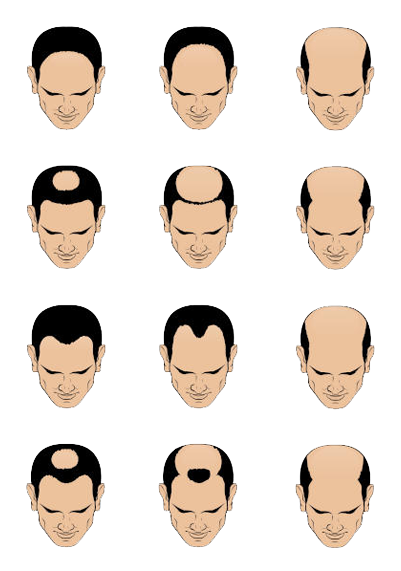
Norwood-classificatie voor haaruitval bij mannen
characteristics of hereditary baldness
Hereditary baldness progresses in a fixed, recognisable pattern that can be easily diagnosed by a professional. In men, it can be recognised by a receding hairline, inlets and a bald crown. A typical feature of hereditary male pattern baldness is that the hairs on either side and at the back of the head (the “wreath”) do not fall out. This is because these are not sensitive to DHT.
Hair that is gone, stays gone
Another feature is the miniaturisation of hair: each growth cycle the hair becomes thinner until a downy hair remains: the last stage before the hair falls out permanently and does not grow back. This process is irreversible: hair that is gone stays gone. Treatment of hereditary male pattern baldness is quite possible with the HST method.

Facts & figures
Impact of baldness
Nobody likes suffering from hair loss that causes deep inlets or a bald crown with little hair left. Many men find baldness very annoying. Hair loss can cause a lot of insecurity, especially at a younger age.
Is it temporary or permanent?
Besides hereditary baldness, (hair) diseases, stress, medication use and hormonal fluctuations are common causes of hair loss. Hair loss that has no genetic cause is often temporary. After the cause of hair loss is removed, hair growth usually recovers. Hereditary baldness, on the other hand, is permanent. Once the hairs have fallen out, they do not come back on their own.
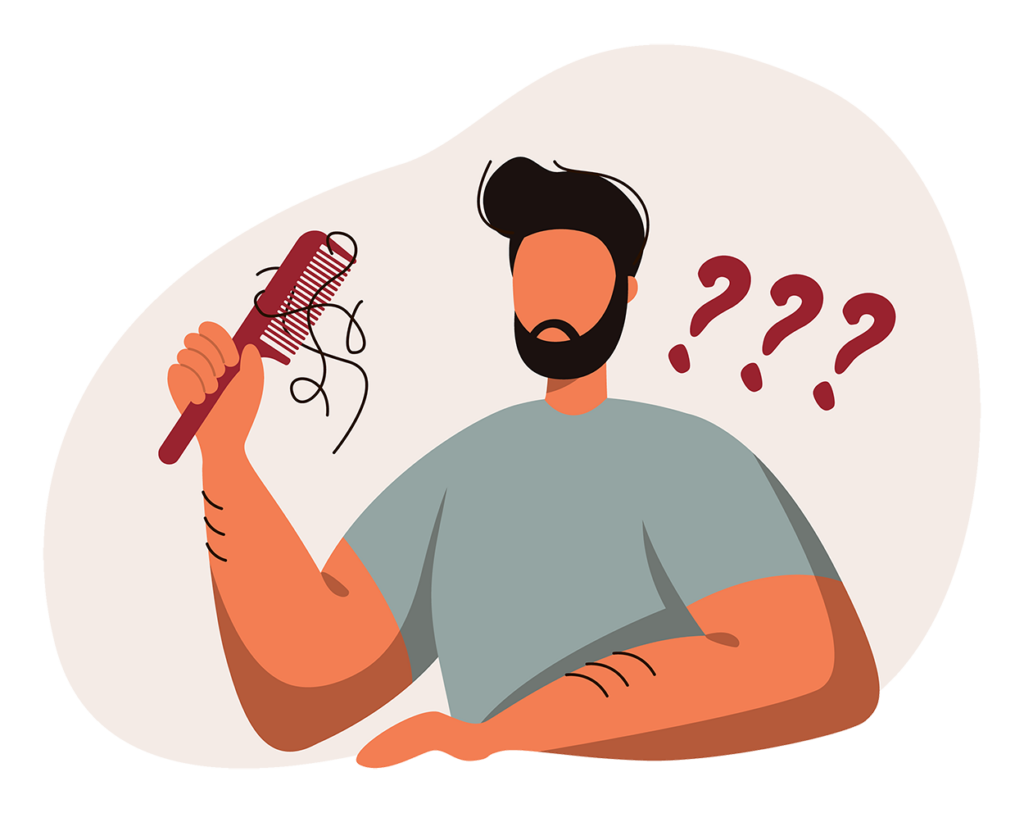
Hair loss - what's normal?
Hair growth occurs in three phases: a growth phase, a transition phase and a resting phase. At least 85% of our hair is in the growth phase. We lose the remaining 15% of hair in the following two phases.
Temporary hair loss
Hair loss can be exacerbated (temporarily) by stress, seasonal changes, hormone fluctuations and medication use, among others. Hair loss that has no genetic cause is usually temporary. After the cause of hair loss is removed, hair growth usually recovers. Hereditary baldness, on the other hand, is permanent.
Losing more and more hair
Until the age of thirty, hair loss of up to fifty hairs a day is normal. Until the age of fifty, loss of up to eighty hairs per day is normal and after the age of fifty up to one hundred hairs per day. You don’t notice and see the normal daily hair loss because it happens scattered over the head and not locally.
Hair loss by age category
| <30 years: | 50 hairs per day hair loss |
| <50 years: | 80 hairs per day hair loss |
| >50 years: | 100 hairs per day hair loss |
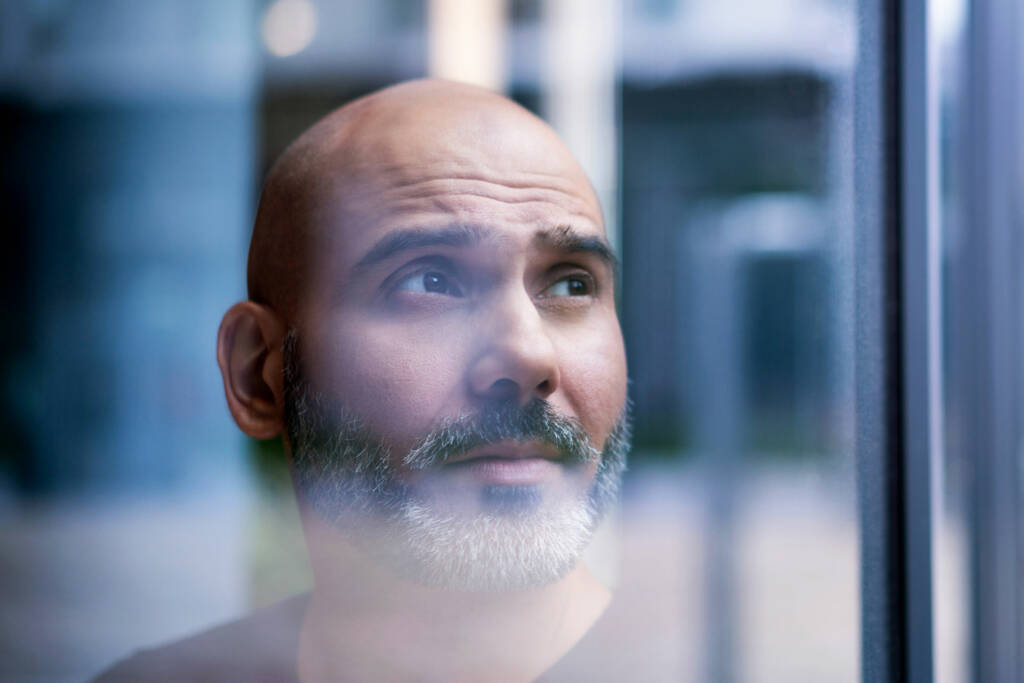
Baldness is a serious problem
Psychological effects of baldness? Yes, there are. When you are dealing with alopecia (baldness), your appearance is suddenly determined by circumstances beyond your control. As an experience, it hardly compares: it is not life-threatening and you are not sick. But your appearance changes involuntarily and dramatically. And that can cause a lot of insecurity, especially at a young age. So it is a serious problem that needs to be taken seriously.

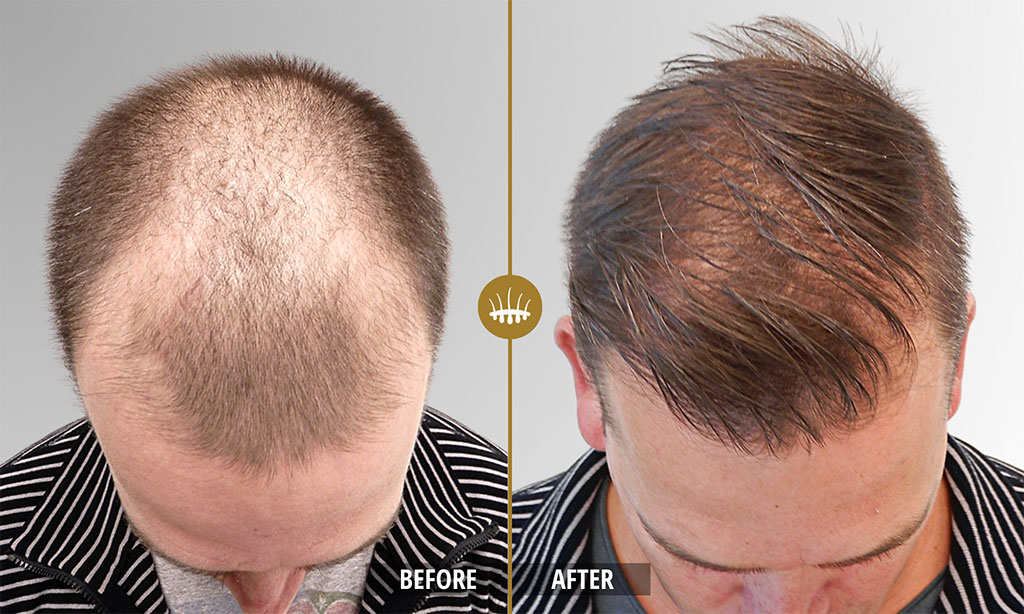
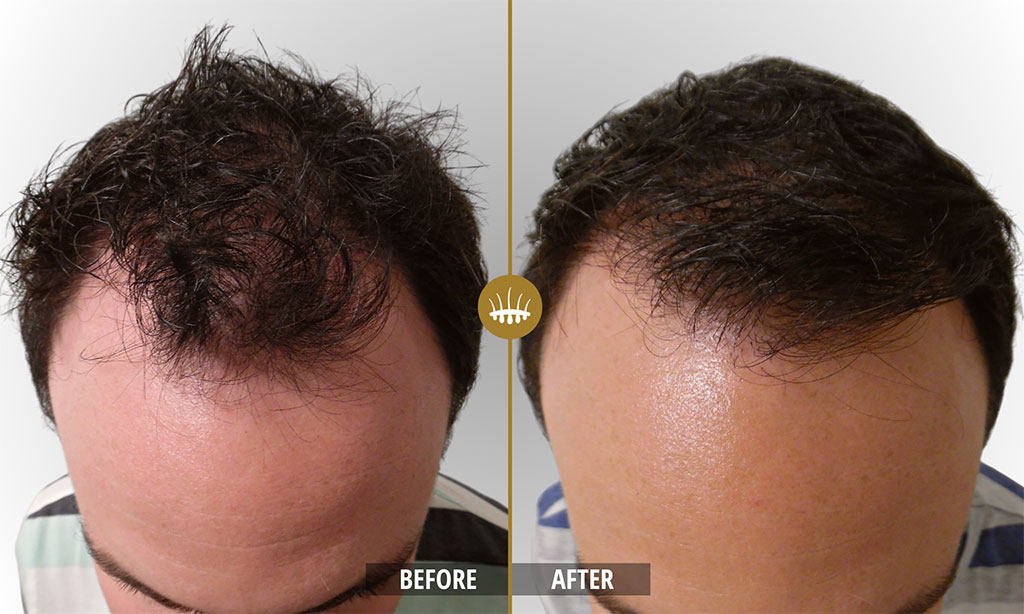
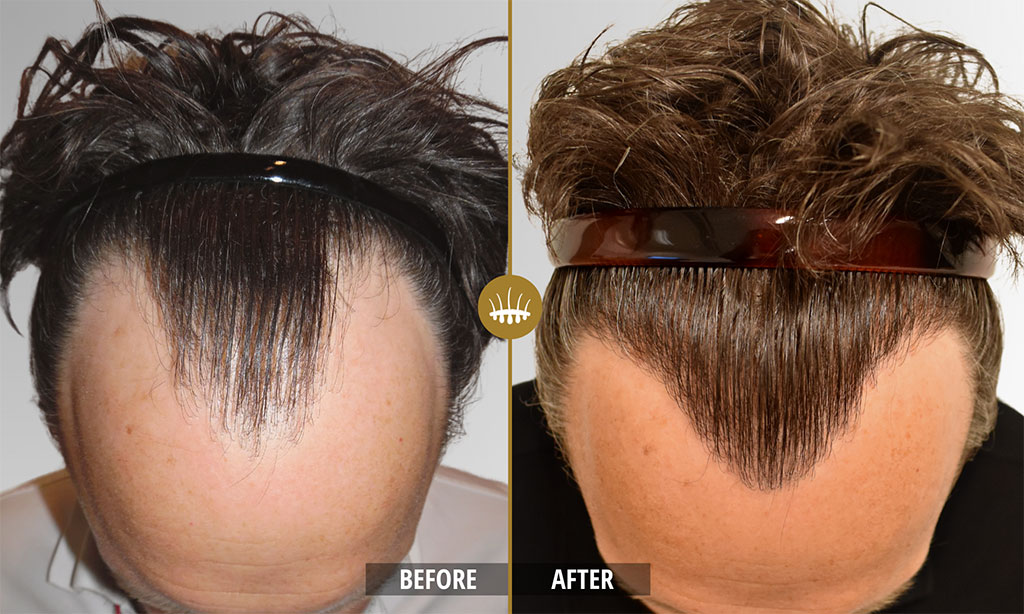


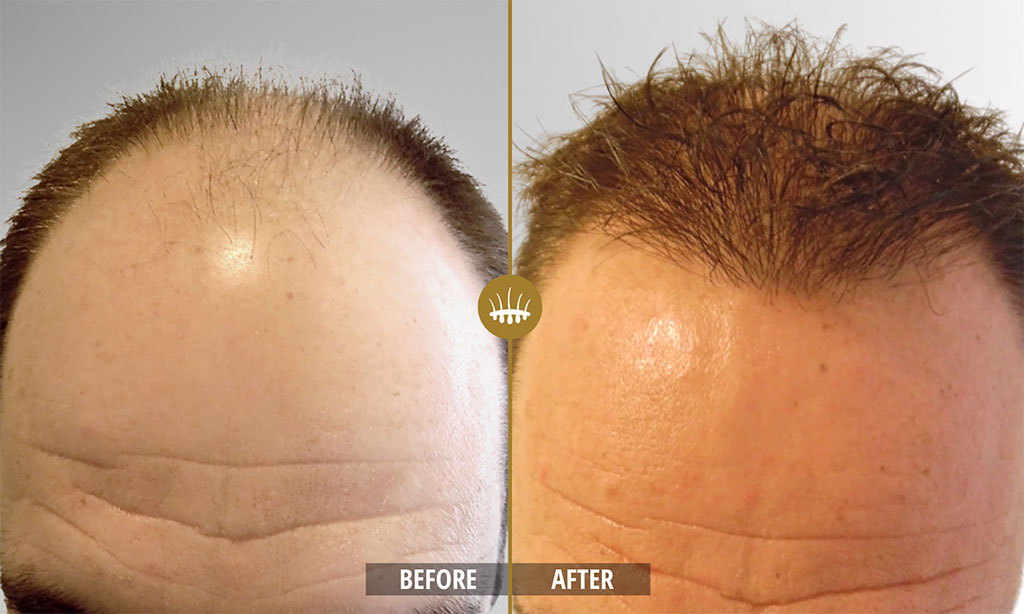
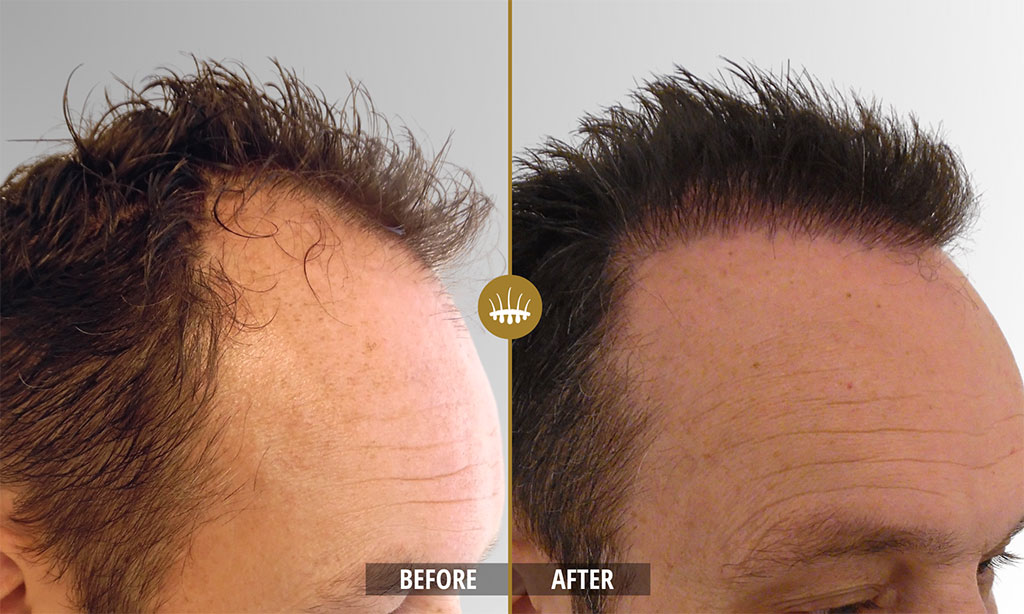
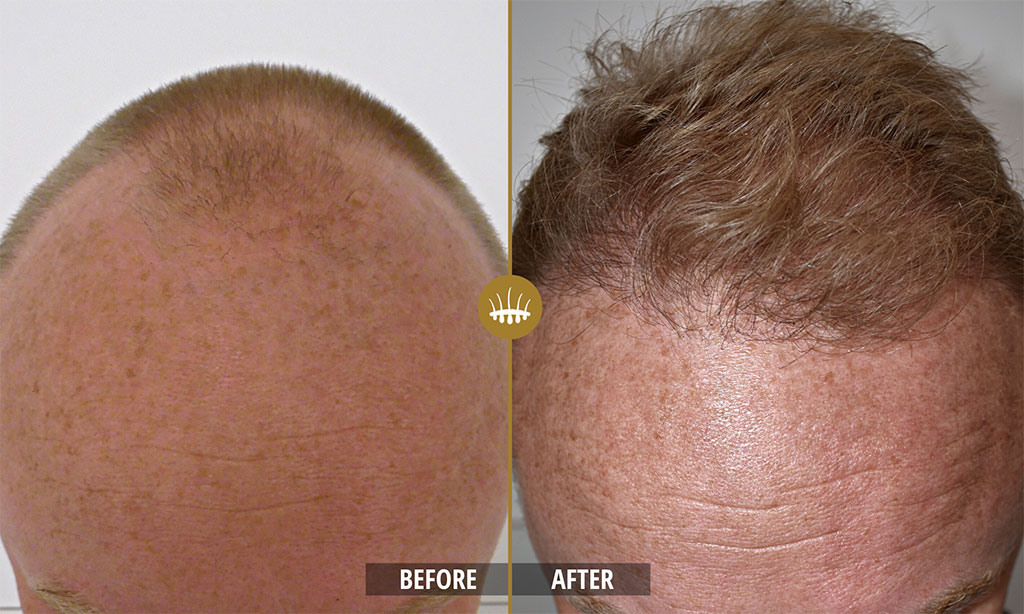

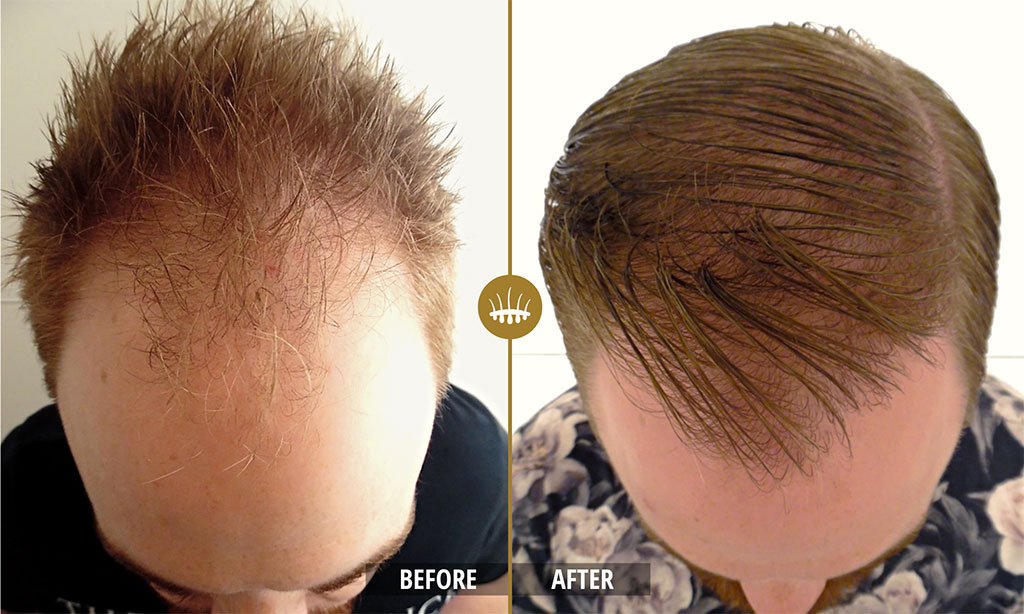


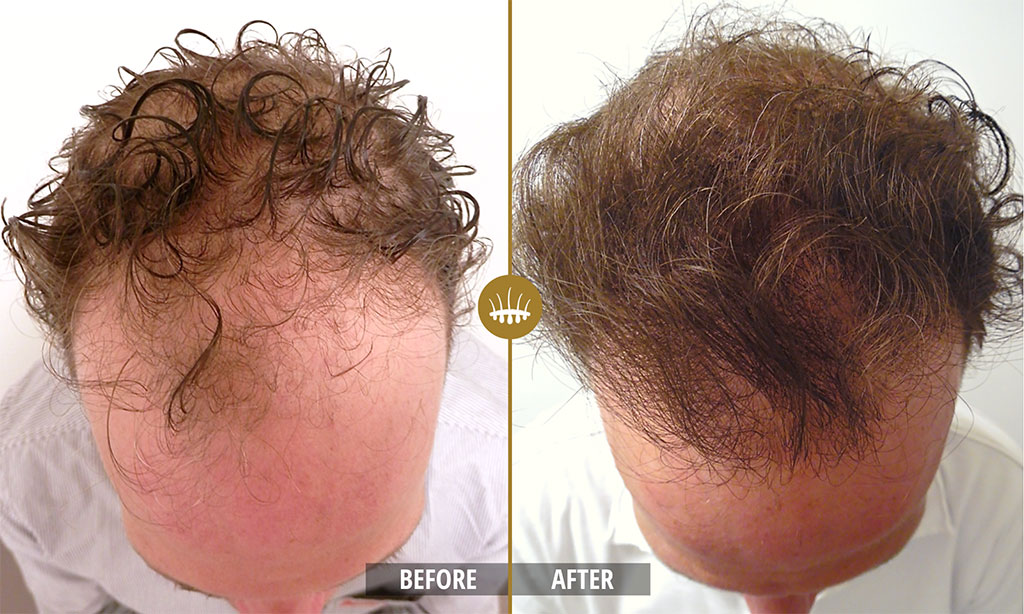
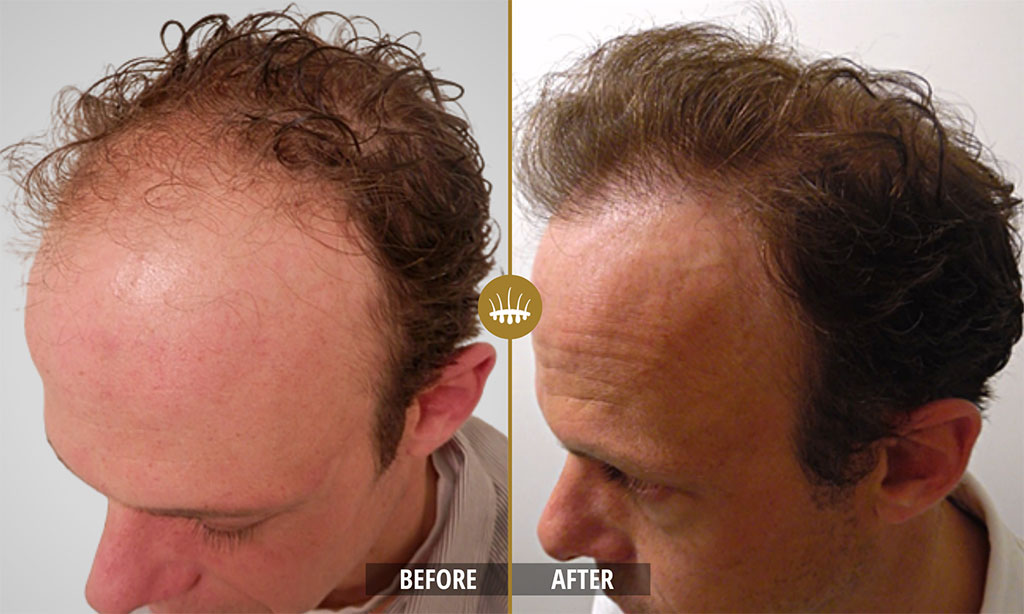


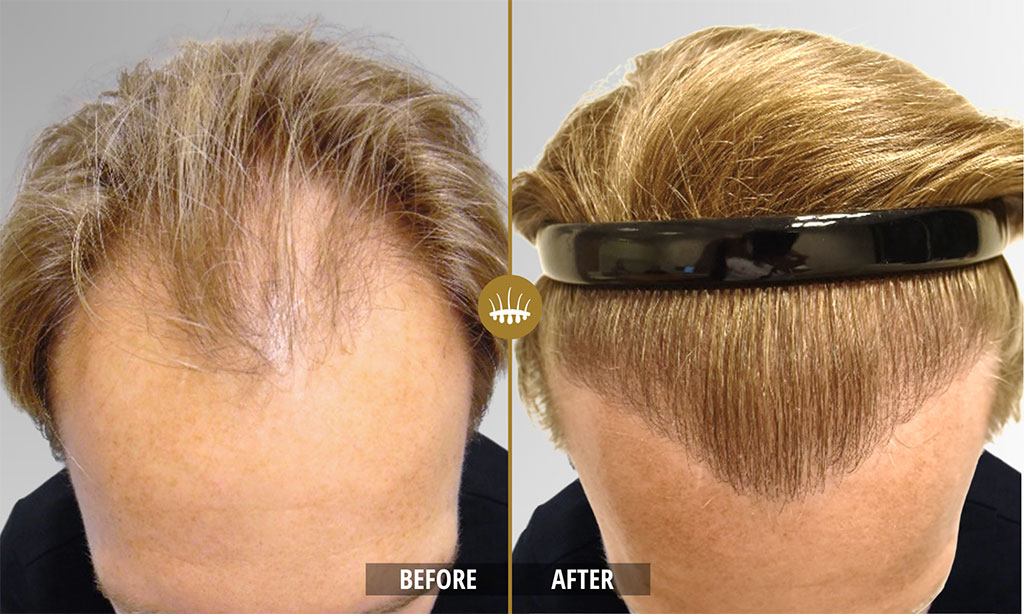
Coves
Deeper inlets and a receding hairline are features of hereditary baldness (androgenetic alopecia). This form of baldness progresses in a fixed, recognisable pattern that can be easily diagnosed by a professional. In men, it can be recognised by a receding hairline, inlets and a bald crown. A typical feature of hereditary male pattern baldness is that the hairs on either side and at the back of the head (the Hippocratic wreath) do not fall out. This is because they are not sensitive to the hormone DHT, which causes hereditary baldness.

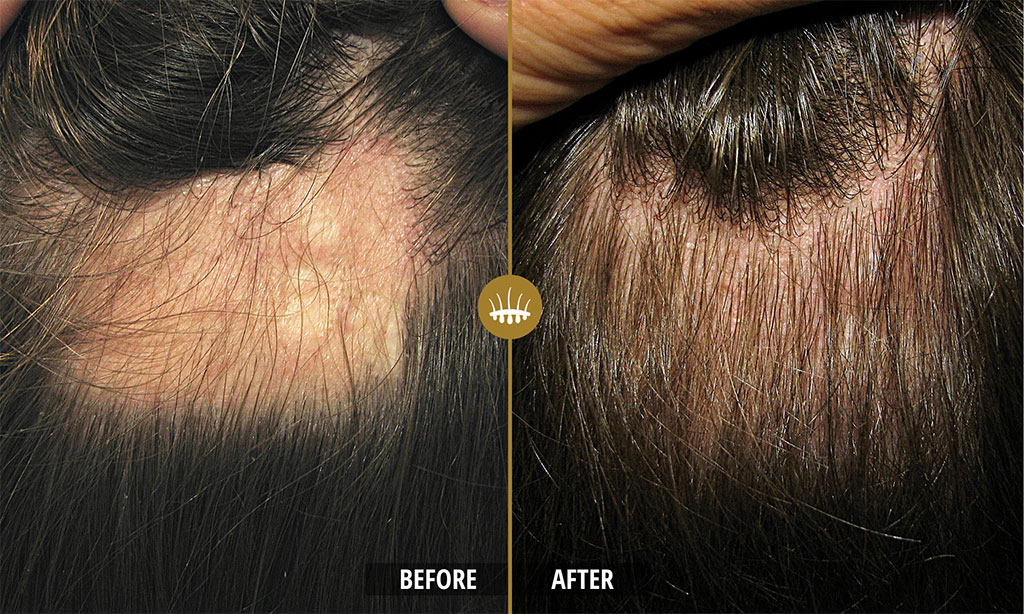
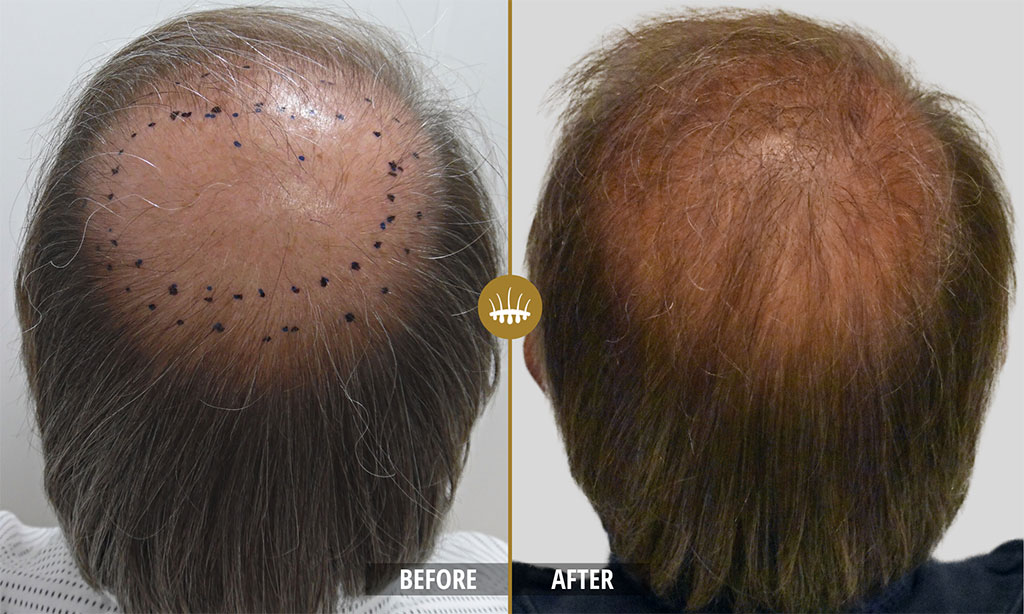
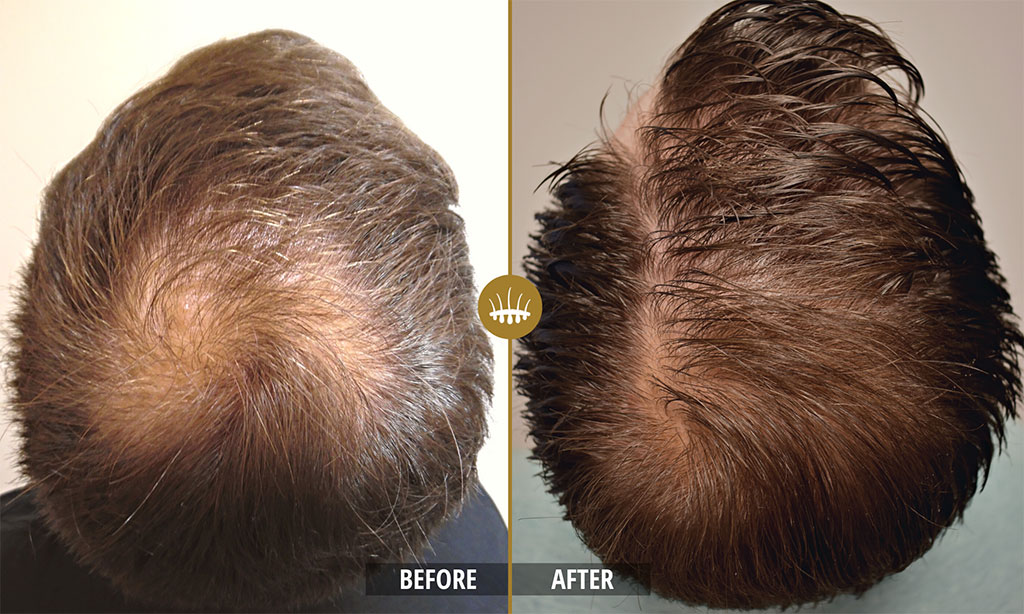
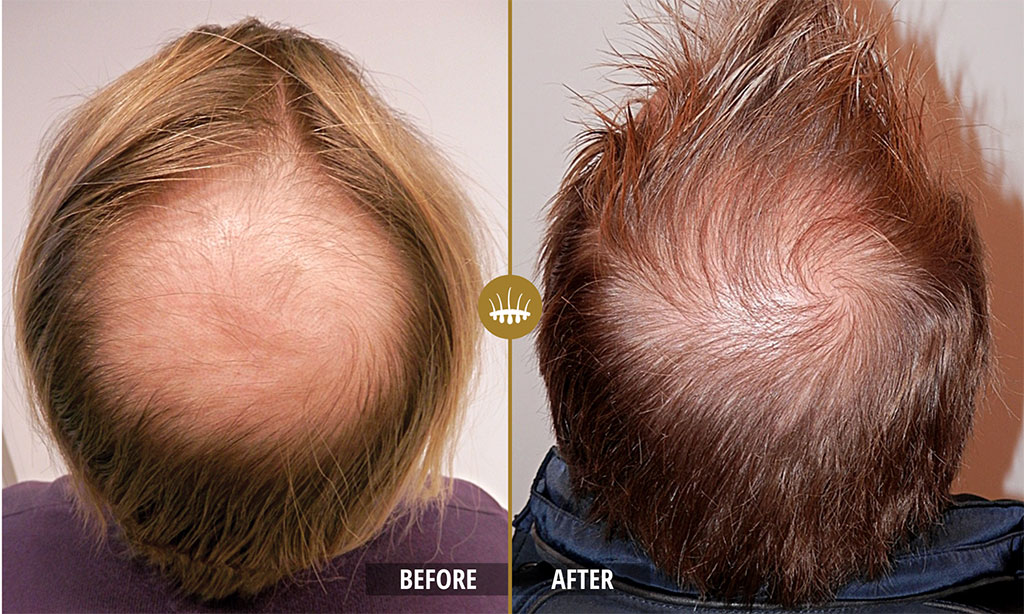
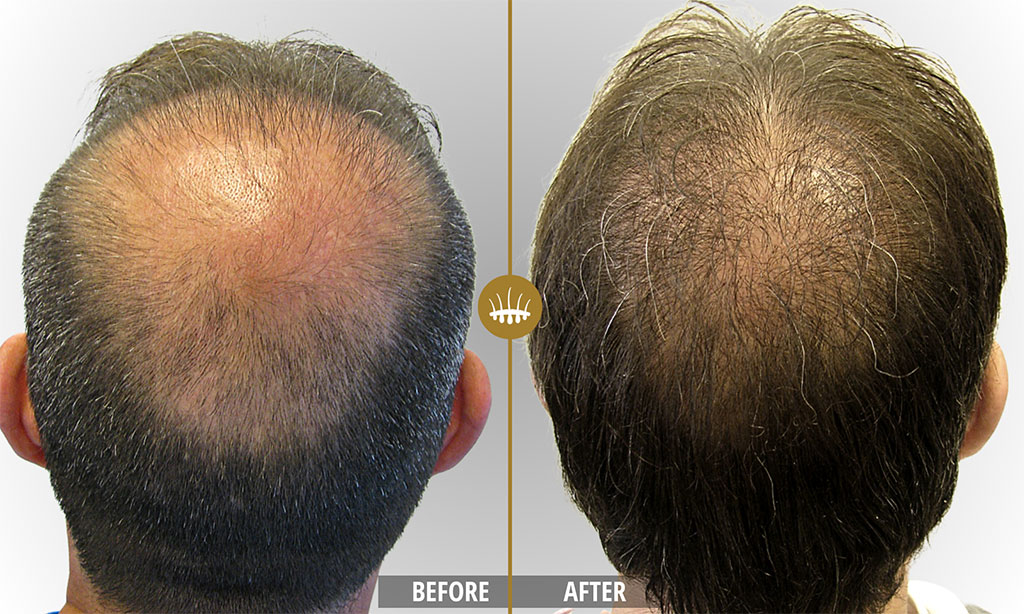
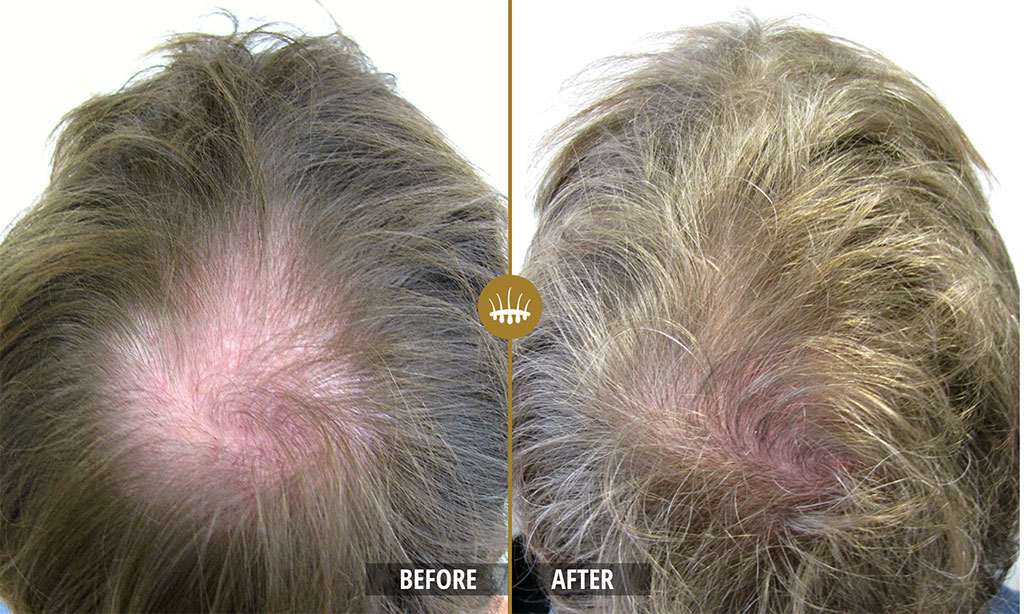


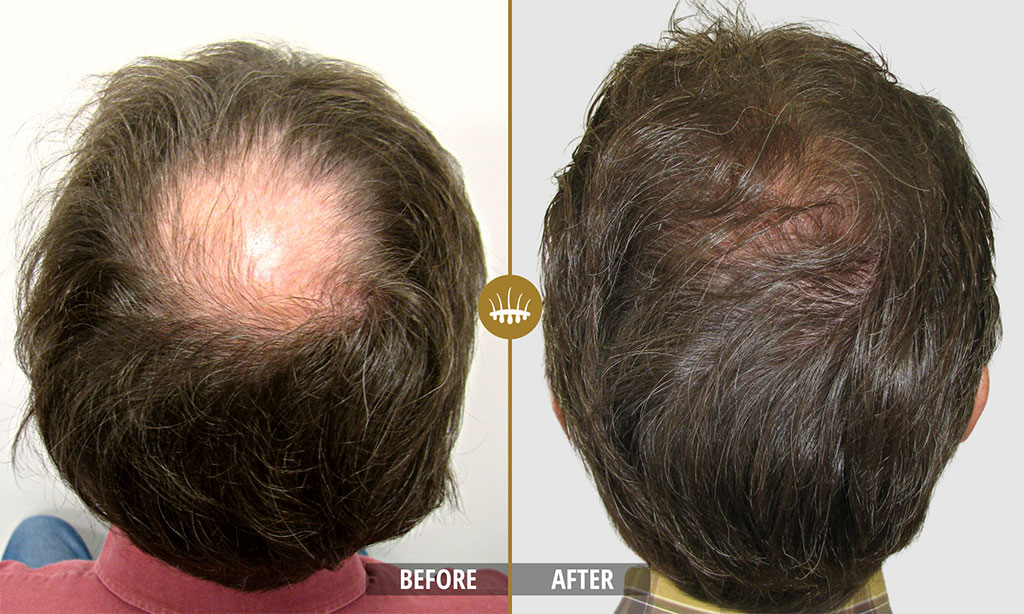

Crown
Thinning hair on the crown also indicates androgenetic alopecia: hereditary baldness in which DHT causes the growth phase of hairs to shorten from three to five years to just a few months. The hair grows progressively thinner and the scalp becomes visible. This recognisable course of hair loss – receding hairline, inlets and a bald crown – is typical of hereditary male pattern baldness. The good news is that this hair loss is perfectly treatable with HST treatment.
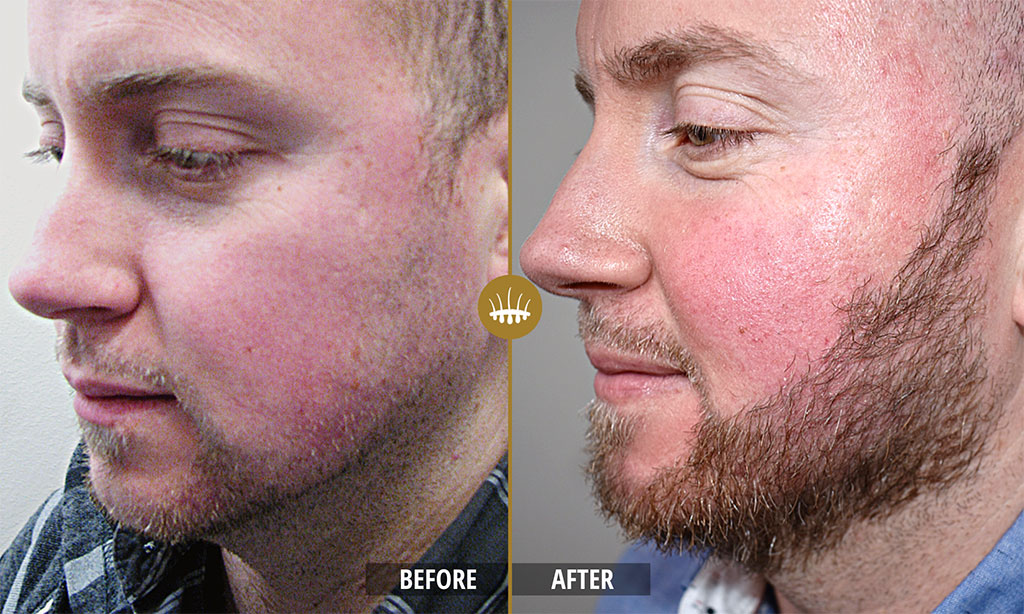

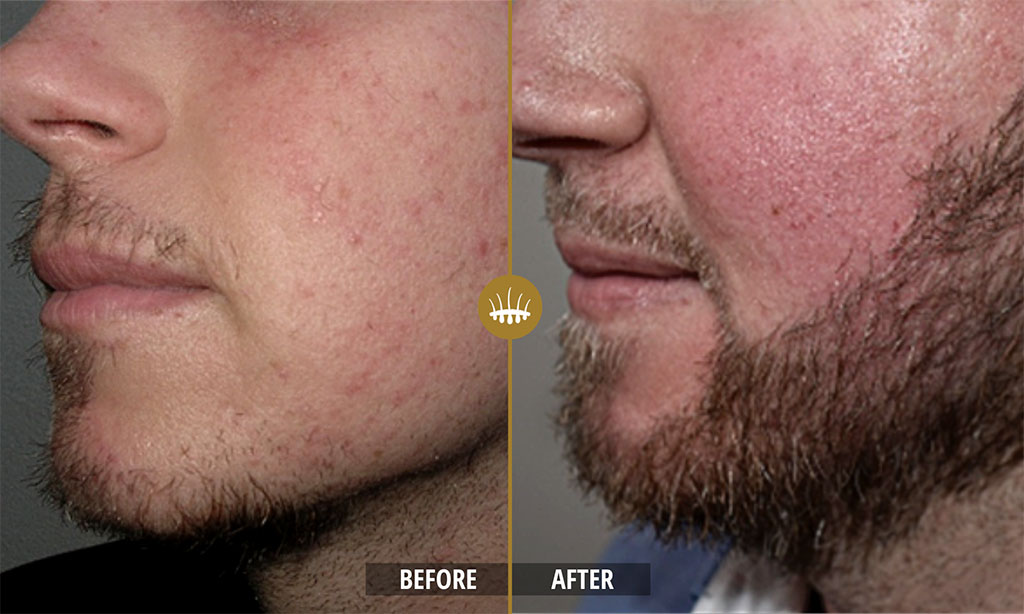
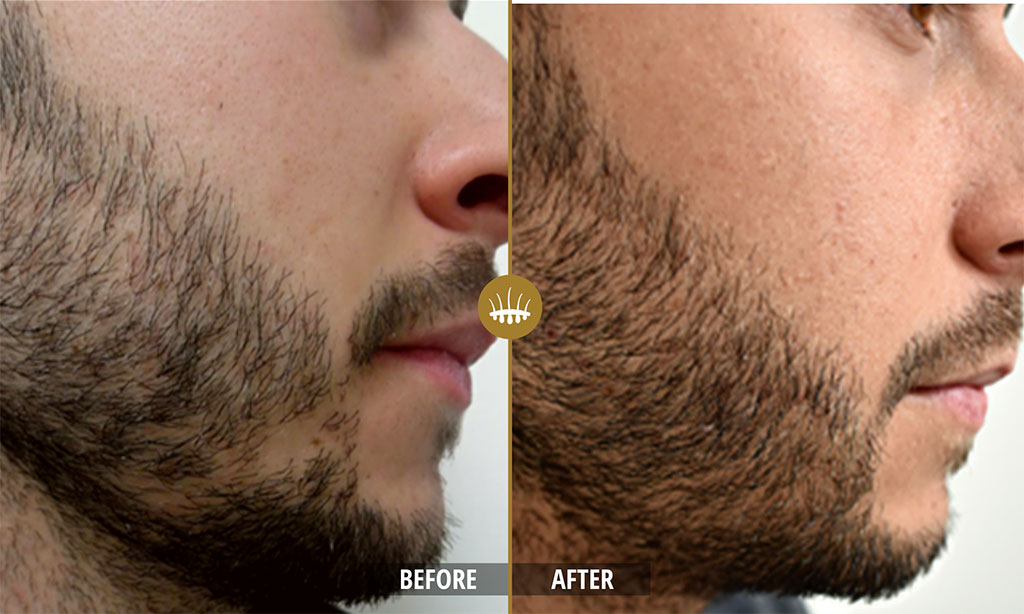
Beard
Male pattern baldness can also occur on the face. Do you suffer from bald spots in your beard, due to hair loss, for example? Or do you have little beard growth and want a fuller beard and/or moustache? An HST beard transplant offers a definitive solution to facial hair problems, even if there are scars or burns. Similar to a regular hair transplant, a beard transplant takes place from a hair donor area. In the areas where no hair grows, hairs are implanted.
FOLLOW-UP TREATMENT
The result of HST is permanent: transplanted hairs continue to produce hair for a lifetime. If you experience hair loss in other areas after a previous hair transplant or have additional hair wishes, it is possible to undergo follow-up treatment. Since the donor area is preserved with HST, this is no problem at all. Reconstructive hair surgery to correct a failed hair transplant that leaves visible scars or an unnatural hairline, for example, is also sometimes desirable. Hair Science Clinic specialises in correcting previous (failed) treatments at other clinics.


Get professional advice
A proper diagnosis is important for determining the cause of your hair loss and choosing a treatment. During a no-obligation consultation with one of our doctors, we will discuss your personal situation and wishes in detail. Together with the doctor, you discuss your options and expectations. Based on this, you will receive an individual treatment plan.
Good to know
Hair loss is often temporary and if it is structural, it can often be treated. For many forms of baldness, a Hair Stem Cell Transplant (HST) offers a solution, with a beautiful, natural result.

